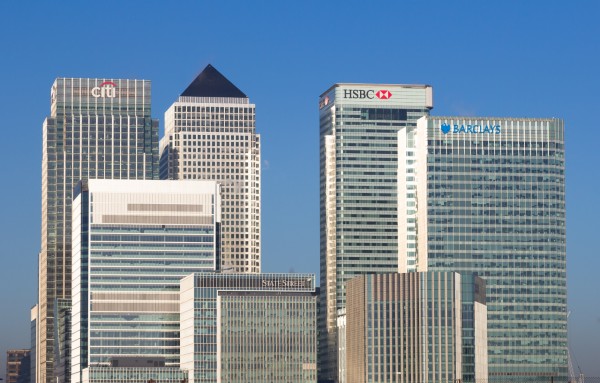Battle of the high street banks – it’s not a fierce one
Last month the Treasury Select Committee (TSC) wrote to the Chief Executive Officers of the top four retail banks (Barclays, HSBC, Lloyds and NatWest), requesting them to attend a meeting to ask what proportion of interest rate rises they pass on to their savings customers.
At the time the letters were sent, the banks all offered less than 1% on their main easy access accounts, although the base rate was 4%.
Further to that meeting, the TSC has now received written responses from the banks, to some of the questions asked.
Arrange your free initial consultation
What did the banks have to say?
The first question asked was “Please can you give details of how [your bank] determines how increases in the Bank rate are passed on to its savers and why the interest rate on the [easy access account] is so much lower than base rate”.
Barclays
Barclays stated that their customers wanted them to set up savings accounts to help them re-develop the savings habit. CEO Matt Hammerstein said “We offer interest rates of up to 5%, with products explicitly designed to play different roles in helping customers achieve their savings goal”.
He failed to answer the actual question though and as we know the 5% is the gross rate on the Rainy Day Saver account which is only available to Blue Reward Customers and is only paid on balances of up to £5,000 – Hammerstein failed to answer the question “How many customers have over £5,000 in savings in instant easy access savings accounts”, claiming the this is commercially sensitive and not disclosed publicly. Barclays is still paying just 0.55% on its Everyday Saver easy access account.
HSBC
HSBC was at least honest that “all banks need to make a spread, or margin, between the rates paid on deposits and the rates charged on lending”. It went on the list the accounts paying the headline rates of 3.25% (Online Bonus Saver) 5% (HSBC Regular Saver) and 7% (First Direct Regular Saver).
CEO Ian Stuart’s answer to the actual question was “…interest rate changes are considered and agreed by a pricing forum which brings together a range of stakeholders from across the organization. These stakeholders bring expertise to provide constructive challenge from multiple angles, including customer, commercial, balance sheet management, risk and regulatory compliance. In addition, an executive-level Rate Price Setting Forum meets following Monetary Policy Committee meeting to ensure the collective response proposed across all HSBC UK products is considered and endorsed by senior leadership”.
Lloyds Bank
The CEO of Lloyds Bank, Charlie Nunn, is a bit more forthright stating “To suggest that we rely on customer reluctance to switch to increase profits is simply wrong”. He goes on to say “In fact, we can see that around 7pc of the balances in instant access savings are moving between competitors every month”. That doesn’t seem very much to me, especially when Lloyds is still paying just 0.65% on balances of under £25,000 on its Easy Saver account!
Once again, as expected, there is no direct response to the question about why the Easy Saver account pays so much less than the base rate. What Nunn does explain is “Base rates are only one of a number of factors that we consider… we must also have mind to the costs and capital requirements we have to factor into our decisions, including the costs of raising funds, the risks of customers defaulting on loans…” And he adds “We also take into account the needs of our shareholders”.
NatWest
Alison Rose, group chief executive at NatWest, said that when setting interest rates “we consider factors such as funding and liquidity requirements of the bank, as well as competitor rates and the other deposit accounts we make available to our customers”.
She stated that NatWest’s Flexible Saver account pays from 1% to 2% (although the 2% applies to balances of £100k or more) – you’ll earn the lower rate of 1% if you have less than £25,000. Still, that’s almost double the rate that Barclays is paying!
It’s what we expected, excuses, excuses, excuses – but at least the rates on offer have all increased since the base rate started to rise, but by different amounts and by different speeds. We’ve done some number crunching to see which banks have paid more to their customers, in our mini ‘battle of the banks’.
The table below shows how much interest you would have earned from the big banks on a deposit of £50,000 since 1/12/2021 – just prior to the base rate hikes. As you can see, Barclays Everyday Saver customers are the losers, earning just £308.69 – while NatWest Flexible Saver customers would have earned almost three times more - £825.20.
But if instead you had put that £50,000 into the best non restricted easy access account available, the Investec Online Flexi Saver account, you would have earned over £1,000 more - £1,945.96.
The table below shows the interest earned on a deposit of £50,000 since 1/12/21
| Type of account | Deposit with interest since 1/12/21 |
|---|---|
| Barclay's Everyday Saver | £50,308.69 |
| Santander Everyday Saver | £50,313.85 |
| Lloyds Easy Saver | £50,405.00 |
| HSBC Flexible Saver | £50,510.93 |
| NatWest Flexible Saver | £50,825.20 |
| Investec Online Flexi Saver | £51.945.96 |
What this illustrates is that, regardless of their excuses, more often than not savers can earn more on easy access accounts, in particular, by switching to lesser well-known challenger and online banks that they can hope to earn with their high street bank – although there are a few instances when some bank customers can earn more.
How are the high street banks performing in other areas of the savings market?
Santander is currently riding high in the Savings Champion cash ISA best buy tables. The latest issue of the Santander eISA (Issue 18) is the top paying easy access cash ISA in our Variable Rate Cash ISAs table (Savings Champion: March, 2023).
Santander’s 1 Year Fixed Rate ISA is also sitting at the top of the table and the 18 Month Fixed Rate ISA is paying 4.25%, just 0.01% less than the top 2-year ISA with Virgin Money. In addition, Santander is offering a £50 e-voucher if you transfer a non-Santander ISA of £10k or more.
Barclays too had been pretty prolific in the short-term cash ISA tables for quite some time, although many of you made us aware of how difficult it has been to actually open an ISA with Barclays. In this day and age of branch closures, justified because people apparently don’t use branches, it seems a very peculiar requirement that you need to make an appointment at a Barclays branch to open a savings account!
Over in the Regular Savings Account table, the high street banks are prolific – but this is probably because you need to hold a current account with the banks in order to have access to these top paying accounts. And the maximum you can save is normally very small, so it’s a small price for the bank to pay to get new current account customers! (Savings Champion: March, 2023)
Despite being hauled in front of the Treasury Select Committee, the lame duck responses from the ‘Big 4’ suggests that the chance of them passing on the recent base rate rises to their easy access customers remains slim at best – and what they do pass on will be as marginal as they feel they can get away with. What would perhaps get a better response would be a mass exodus of savings money – so get ‘voting with your feet’ and move to a better savings provider!
Arrange your free initial consultation
This article is intended for general information only, it does not constitute individual advice and should not be used to inform financial decisions.

